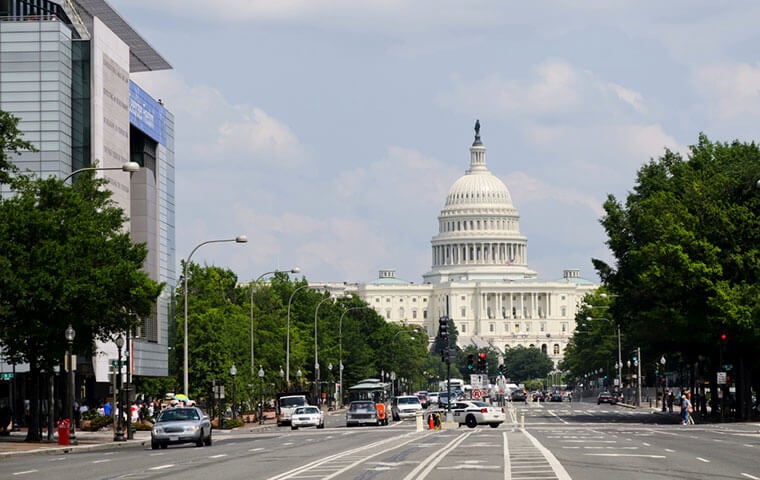 A separate recently introduced bipartisan bill would require federal employees work onsite at least 60 percent of the time. Image: Konstantin L/Shutterstock.com
By: FEDweek Staff
A separate recently introduced bipartisan bill would require federal employees work onsite at least 60 percent of the time. Image: Konstantin L/Shutterstock.com
By: FEDweek StaffProposals to limit offsite work by federal employees and/or to shrink the federal office space footprint have gained more traction in Congress with the first Senate bills on those topics set for committee voting this week and the House poised to approve setting new standards on those issues for the FAA.
The Senate Homeland Security and Governmental Affairs Committee — which to date has lagged behind its House counterpart panel in addressing those issues — plans voting this week on two bipartisan bills:
* S-4043, to require OPM to set new requirements for agencies to report on their telework practices, including the impacts on customer service, backlogs and wait times, cost to operations, security, management of real estate and other property, technology investments, and recruitment and retention. Also, agencies would have to track and report their space utilization rates under guidance from OMB, make their telework policies publicly available online, and establish automated systems to track telework.
* S-3015, to require federal managers to review employee telework agreements annually to determine whether to renew them, taking into account factors such as whether the duties have changed, the employee’s performance and the needs of the agency. In addition, managers and employees would be trained annually on offsite work rules, and OPM would have to annually provide more detailed reporting on offsite work by agency. It also would require agencies to report on positions are the best fit for performance offsite and promotes the hiring of veterans, spouses of military service members and spouses of federal law enforcement officers for such positions.
Approval there would clear those bills for Senate floor votes that would move them to the House, which already has passed HR-6276, which would trigger a process of consolidating and selling off space if usage stayed below 60 percent for more than a year.
A separate recently introduced bipartisan bill is still pending in the Senate committee. That measure, S-4266, would require federal employees work onsite at least 60 percent of the time; require agencies to monitor the work of employees engaged in telework to ensure they are actually working; and require agencies to report on their productivity metrics and the potential negative effects of telework on productivity, morale, security vulnerabilities, or waste, fraud, or abuse.
The FAA-related bill, HR-3935, is a reauthorization measure that already has passed the Senate with some changes after initially passing the House. It would set agency-specific policies there that could act as a model for similar language affecting other agencies in bills to come.
For example, it would require that the agency’s telework policies not “inhibit site visits, inspections, in-person collaboration, on-the-job training, and operations”; and require “the consideration of telework status and duty station when determining pay rates for employees,” according to a summary.
It further requires the FAA’s parent Transportation Department “to review the office footprint of the DOT to determine if it is an adequate use of resources based on the workforce, the needs of that workforce, the regions where DOT’s modal administrations perform work, and general changes to how and where work is completed.”
The department then would have to “determine where office consolidation within and between modes may make sense,” taking into account factors such as “accessibility for persons with disabilities, maintenance costs, and age and condition of such offices,” the summary says.
OPM Advises Agencies on Conducting RIFs During Shutdown
Updated Shutdown Contingency Plans Show Range of Impacts
Use Shutdown as Justification for More RIFs, OMB Tells Agencies
Unions Win a Round in Court Disputes over Anti-Representation Orders
Deferred Resignation Periods End for Many; Overall 12% Drop
Senate Bill Would Override Trump Orders against Unions
See also,
How to Handle Taxes Owed on TSP Roth Conversions? Use a Ladder
The Best Ages for Federal Employees to Retire
Best States to Retire for Federal Retirees: 2025

